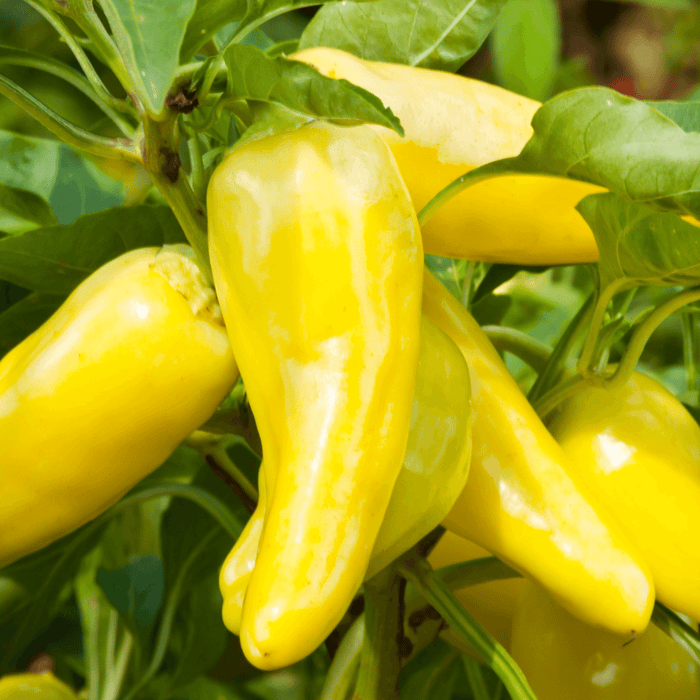Introduction: Fertilizing Your Pepper Plants for a Bountiful Harvest
Pepper plants are a staple in many home gardens, providing various flavors and heat levels to spice up any dish. However, growing healthy pepper plants with bountiful yields requires more than just planting and watering. Proper fertilization is one of the most important aspects of successful pepper plant growth. You may wonder how to fertilize pepper plants and how often to fertilize them.
Fertilizer provides essential nutrients that pepper plants need to thrive and produce large, flavorful fruits. Plants may suffer from stunted growth or produce small, lackluster peppers without adequate nutrients.
But don't just grab any old fertilizer off the shelf – choosing the right fertilizer can make all the difference in your harvest. Some fertilizers contain too much nitrogen or other nutrients that can harm your plants if misused.
That's why it's crucial to understand the nutritional needs of your pepper plants and choose a fertilizer that meets those needs. In this article, I'll share my opinions on fertilizing pepper plants for optimal growth and yield.
From understanding nutrient requirements to choosing the right fertilizer and applying it correctly, I'll cover everything you need to know for a successful harvest. But before we dive into the specifics, let me rant about something that really grinds my gears: gardeners who neglect or skimp on fertilizing crops.
It baffles me how some people will spend hours tending to their heirloom garden seed beds – weeding, watering, and pruning with care – only to completely overlook perhaps one of the most vital components of plant health: proper nutrition. So let me be clear: if you want healthy pepper plants with robust yields that will make all your gardening efforts worth it – fertilize!
And don't just do it once or twice; ensure you follow an appropriate schedule throughout the pepper growing season based on your plant's specific needs. Now that I've got that off my chest let's jump into the nitty-gritty of fertilizing pepper plants.
Understanding the Nutritional Needs of Pepper Plants
Pepper Plants are Hungry Creatures
Pepper plants are notoriously hungry creatures that require a lot of nutrients to grow tall and produce abundant fruit. Therefore, it is essential to understand the nutritional needs of your pepper plants, so you can provide them with the right type and amount of fertilizer. Growing peppers property requires basic knowledge of properly giving them the food they need to thrive.
Pepper Seed Assortment | 8 Variety Pack
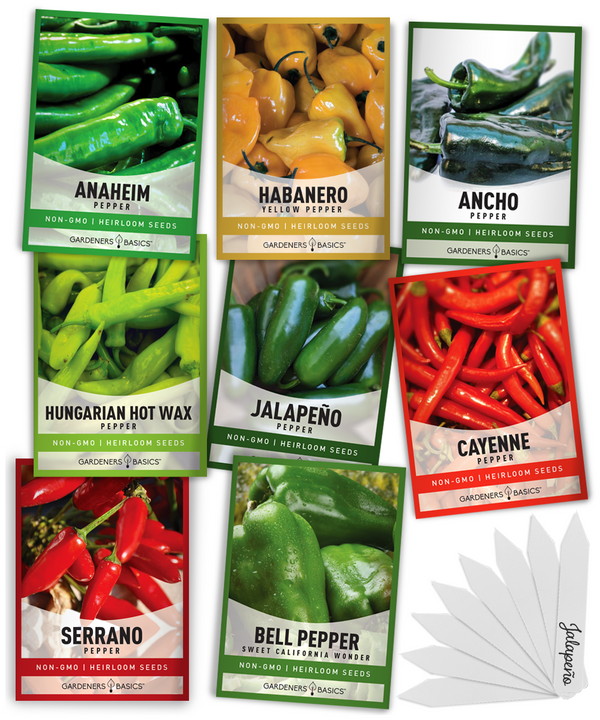
$15.95
8 Pepper Seeds Variety Pack – Heirloom, Non-GMO, Open-Pollinated, Non-Hybrid Seeds Elevate your garden with our 8 Pepper Seeds Variety Pack! This premium selection includes a mix of heirloom, open-pollinated, non-hybrid, non-GMO pepper seeds, perfect for beginner and experienced gardeners.… read more
The Essential Nutrients for Pepper Plants
The three primary nutrients that pepper plants require are nitrogen, phosphorus, and potassium.
Nitrogen is responsible for promoting leafy growth and improving the plant's overall health.
Phosphorus helps to strengthen roots and stimulate flower development.
Conversely, potassium improves fruit quality by increasing its size, color, and flavor.
The Importance of Nitrogen
Nitrogen is one of the most important nutrients for pepper plants because it influences plant growth and fruit production. When a pepper plant has adequate nitrogen, it will produce more foliage which can help shade fruits from direct sunlight during hot summer days. This will prevent sunscald on peppers which can ruin an entire harvest if not appropriately addressed.
However, too much nitrogen can also harm a pepper plant's health because it can cause excess foliage growth at the expense of fruit production. Therefore when fertilizing your peppers, always monitor their growth to ensure they don't become too bushy or start displaying signs that they lack certain nutrients other than nitrogen.
The Power of Phosphorus
Phosphorus is another critical nutrient for pepper plants, as it plays a crucial role in root development, pollination, and seed formation. When phosphorous levels in the soil are low or absent, peppers will develop weak root systems, which means they won’t be able to effectively uptake water or nutrients.
Additionally, pepper plants may not stand up straight without strong roots, and they will be prone to falling over, especially when mature fruits are present. Therefore phosphorus is an essential nutrient that should not be overlooked when fertilizing your pepper plants.
Potassium for Quality and Flavor
Potassium is the third essential nutrient that plays a vital role in improving the quality of peppers. It improves their size, flavor, color, and overall fruit quality. Potassium also helps to regulate the water uptake in plant cells, which can help prevent wilting or dehydration from too much heat or drought conditions.
However, it is important to note that if potassium levels are too high or misapplied, it can cause damage to pepper plants by burning their roots or even causing leaf scorching on foliage. Therefore always follow manufacturer recommendations for fertilizer application rates and ensure you don't go overboard when applying potassium-rich fertilizers.
Understanding the nutritional needs of your pepper plants - mainly nitrogen, phosphorus, and potassium - is important if you want them to grow tall and produce abundant fruit. By providing them with the right type and amount of fertilizer at specific times during their growing season, you can help ensure they have a healthy root system, strong foliage growth, and robust fruit development, which will ultimately yield a bountiful harvest.
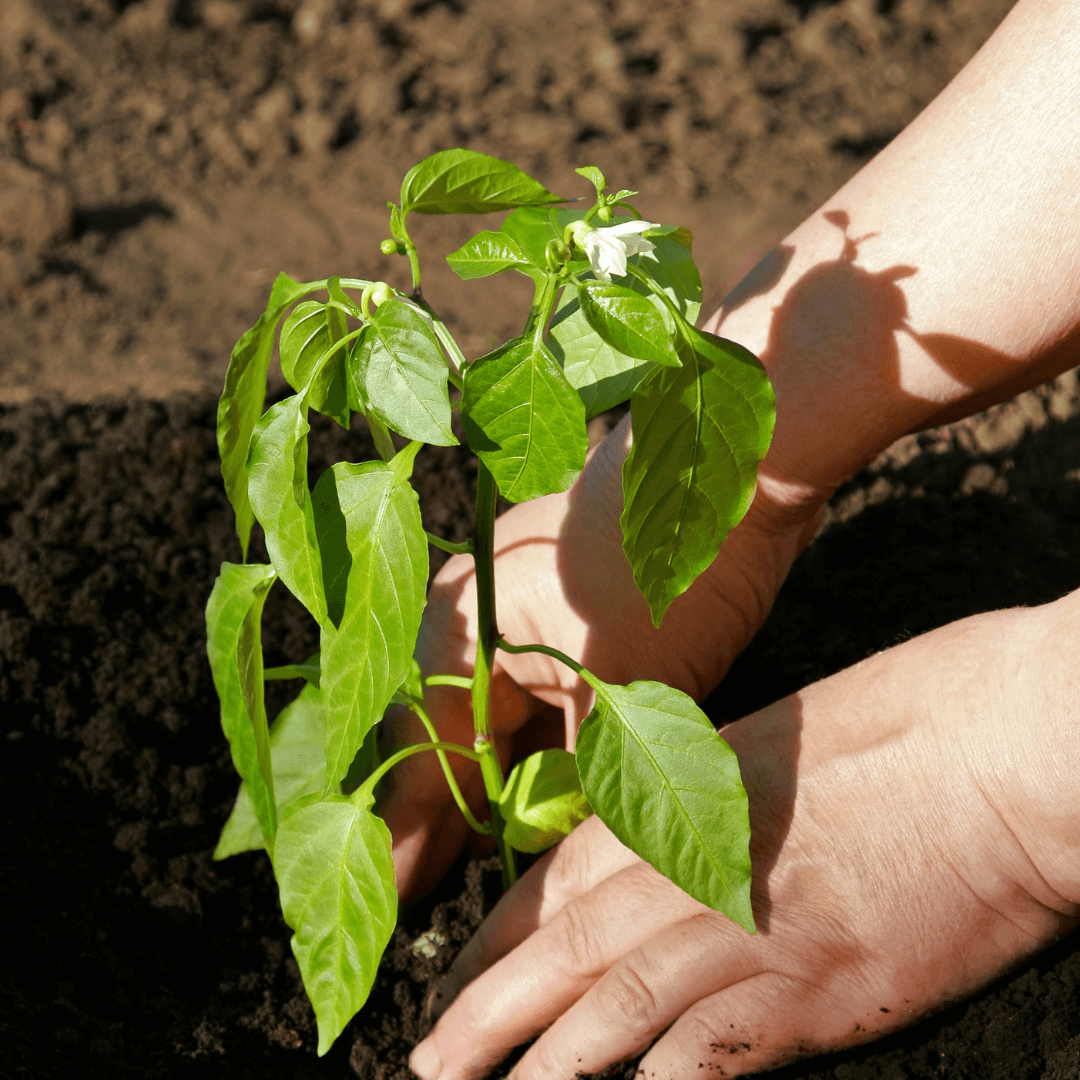
Choosing the Right Fertilizer for Pepper Plants
The Great Debate: Organic vs. Synthetic Fertilizers
The debate between organic and synthetic fertilizers has been raging for years, and pepper growers are no exception to this battle. On the one hand, some swear by organic fertilizers, claiming they are better for the environment and produce healthier plants.
On the other hand, some prefer synthetic fertilizers because they believe they provide more effective and efficient results. So which side is right?
In my opinion, both sides have valid arguments. Organic fertilizers offer a natural approach to nurturing plants that is better for the environment and promotes soil health.
However, their slow-release nature means it can take longer to see results when using them on pepper plants. On the other hand, synthetic fertilizers offer fast-acting nutrients that can produce quicker results but have negative environmental impacts such as runoff.
Deciphering Fertilizer Labels
Reading fertilizer labels can be overwhelming if you know what each number represents. The three numbers found on fertilizer labels represent the percentages of nitrogen (N), phosphorus (P), and potassium (K) in the fertilizer.
When it comes to choosing a fertilizer for your pepper plants, take into consideration their nutritional needs in each stage of growth. For example, during vegetative growth stages, your pepper plant requires more Nitrogen, whereas when fruit starts growing, more phosphorus might be necessary.
Suppose you're looking at an organic fertilizer label. In that case, you might find a variety of ingredients like bat guano or sea kelp meal listed along with N-P-K percentages. In contrast, synthetic fertilizers may list every mineral component in the mixture. Overall it's important to pay attention to what's in your fertilizer, so you know which will work best to get optimal growth from your pepper plants.
Hot Pepper Seeds For Planting | 5 Variety Pack
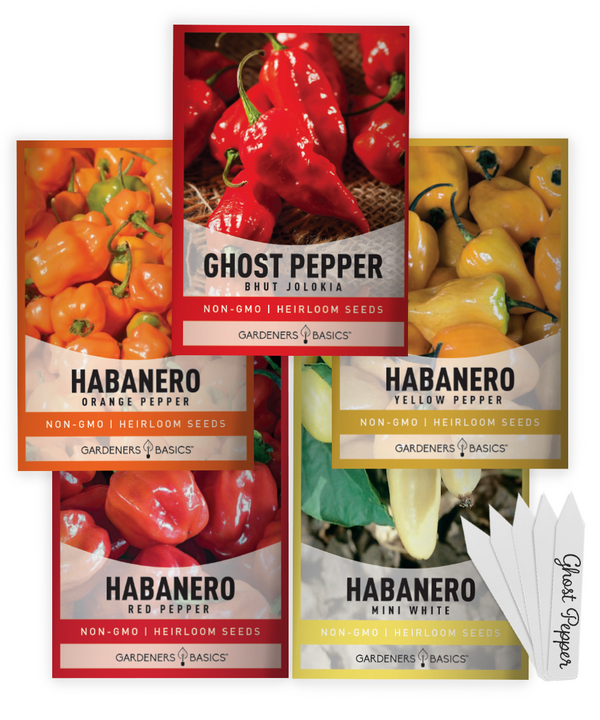
$9.95
Heirloom Hot Pepper Seeds – 5 Variety Pack, Includes Habanero & Ghost Pepper Seeds Spice up your garden with our 5 Hot Pepper Seeds Variety Pack—a must-have for any hot pepper lover or home gardener! This premium collection includes heirloom, non-hybrid,… read more
Bigger Isn't Always Better
It's easy to assume that a fertilizer with higher percentages of N-P-K will produce the best results, but that's not always true. Overfertilizing can cause more harm than good to pepper plants. Generally, it is best to apply fertilizers in smaller quantities more frequently rather than a large amount simultaneously.
Additionally, it's important to remember that pepper plants can be sensitive to certain minerals such as chlorine, boron, or sodium that are included in some synthetic fertilizers. Always read labels and research before purchasing any fertilizer, particularly if you're uncertain about its contents.
Consider Your Budget
The cost of fertilizers should also be taken into consideration when making a decision about which one to use for your pepper plants. Synthetic fertilizers are cheaper, while organic forms may be more expensive but can have additional benefits like soil improvement or pest management.
However, just because organic fertilizers tend to cost more doesn't mean they are always better. Gardeners with financial constraints mustn't let their limited budget dictate the quality of fertilizer they select; sometimes, you can find affordable, high-quality options if you're willing to research and shop around.
Final Thoughts
Choosing the right fertilizer for your pepper plants depends on individual needs and preferences regarding environmental impact, effectiveness, and budgetary considerations. Overall, as growers, we take time researching our options, carefully reading labels, and consulting with experts before settling on one we'll ultimately use throughout our harvest season.
When to Start Fertilizing Pepper Plants
Pepper plants require a lot of nutrients to grow and produce fruit, so it's important to start fertilizing them at the right time. Generally, you should start fertilizing pepper plants after they have been transplanted or after seedlings have emerged.
However, it's important not to rush into fertilizing too soon. Many inexperienced gardeners make the mistake of fertilizing their pepper plants too early, causing more harm than good.
Young pepper plants are still getting established and need time to develop strong roots before they can handle the extra nutrients from fertilizer. If you fertilize too soon, you risk burning the roots and inhibiting growth.
Instead, wait until your pepper plants have been in the ground for a couple of weeks or until seedlings have emerged before applying fertilizer. This will give them enough time to establish themselves and reduce the risk of root damage.
How Often to Fertilize Pepper Plants
Now that we know when to start fertilizing our pepper plants, let's talk about how often we should do so throughout the growing season. The frequency with which you should apply fertilizer depends on several factors, including the fertilizer used and your specific growing conditions.
If you're using an all-purpose fertilizer (such as a 10-10-10), you'll typically want to apply it every four to six weeks throughout the growing season. However, if you're using a slow-release or organic fertilizer, you may only need to apply it once or twice per season.
Regardless of your fertilizer, it's essential not to over-fertilize your pepper plants. Too much nitrogen can cause excessive foliage growth at the expense of fruit production, while too much phosphorus can inhibit nutrient absorption in peppers leading them susceptible to root rot.
It's also important not only when but how much fertilizer you apply. Overfertilizing can burn your plants and affect their growth, so carefully measure out the recommended amount of fertilizer per plant.
Jalapeño Pepper Seeds
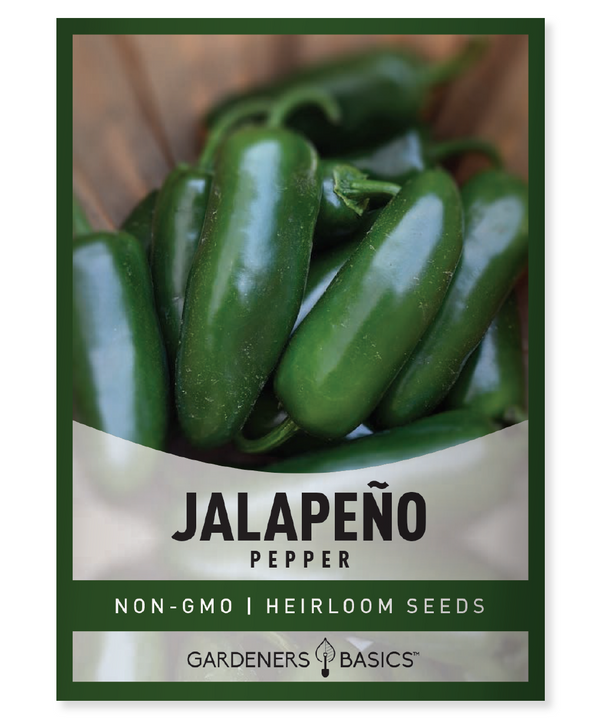
$2.49
Jalapeño Pepper Seeds - Heirloom, Non-GMO, Open Pollinated, Non-Hybrid & Planting & Growing Guide Looking for premium Jalapeño Pepper Seeds? Our seeds are heirloom, non-GMO, non-hybrid, and open-pollinated, ensuring top-quality, reliable growth. Jalapeños are a favorite among gardeners and chefs… read more
Types of Fertilizers
Different fertilizers have different application methods; some may last longer than others. For example, organic fertilizers typically last longer than synthetic fertilizers because they take longer to break down in the soil.
Slow-release fertilizers are designed to provide a steady supply of nutrients over an extended period, while liquid fertilizers are absorbed immediately into the soil. When choosing a fertilizer for your pepper plants, consider how often you want to apply it and how long it will last.
Fertilizing your pepper plants is crucial for healthy growth and fruit production. Knowing when and how often to apply fertilizer is essential for maximizing your harvest while avoiding over-fertilizing your peppers. Be patient when starting fertilization because too much too soon can cause more harm than good.
Additionally, always follow the instructions on the fertilizer label carefully and ensure you're not over-fertilizing or under-fertilizing your pepper plants by measuring the right amount per plant during application. Remember that every garden is unique, so don't be afraid to always monitor each plant's growth throughout the season so that you can adjust accordingly as needed.
Applying Pepper Fertilizer Correctly
Pepper plants are a delicate bunch when it comes to fertilization. They require the right amount of nutrients and a proper application method. Misapplying fertilizer can harm your pepper plant's growth and overall yield.
Here's how to apply fertilizer directly to the soil around each plant. The first step is to mix the fertilizer with soil before planting your pepper plants.
However, if you missed this step, don't worry; you can still apply it correctly once your plants grow. First, ensure moist soil around each pepper plant before adding fertilizer.
This ensures that the nutrients will quickly get absorbed by the root system. Next, sprinkle a small amount of fertilizer around each pepper plant base.
Be careful not to add too much as this may cause a nutrient burn or damage the roots, leading to stunted growth or even death of the plant. The recommended amount of fertilizer per plant varies depending on size and age.
If you use granular or slow-release fertilizers, ensure they're spread at least 12 inches from the stem to avoid burning it. Alternatively, liquid fertilizers can be applied directly onto foliage and soil next to crops.
Dosage Matters
Applying too much fertilizer leads to problems such as salt injury and delayed fruit formation- this means that overfertilization will lead to stressed plants that produce fewer fruits. On the other hand, under-fertilization results in pale leaves and tiny fruits.
Before applying any type of fertilizer for pepper plants, ensure you read through the instructions provided on its package carefully: Most instructions include recommended dosage based on crop size per particular stage: Seedling stage requires less compared with the flowering stage, for example. Remember that different peppers will have different nutrient needs, so pay attention when deciding which form of fertilization- granules, liquid, or organic matter- to use.
Types of Fertilizers:
Organic fertilizers are digested and turned into nutrients by soil microbes, which release them to plants. These fertilizers are environmentally friendly and provide long-term benefits such as improving the soil structure. Inorganic fertilizers, on the other hand, are chemically formulated using synthetic compounds that have higher quantities of nutrients compared to organic fertilizers.
Regardless of the type of fertilizer used, apply it in small amounts over time rather than all at once. This prevents nutrient overload in the soil and allows plants to absorb them gradually throughout their growth cycle.
Applying fertilizer correctly is essential for healthy pepper plant growth and fruit production. The right fertilizer should be chosen based on its NPK ratio (nitrogen-phosphorus-potassium) and a plant's current growth stage.
It's important to follow instructions carefully when applying any type of fertilizer and not exceed dosage recommendations- doing so can lead to damage or even death of your pepper plants. Remember that different types of peppers have different nutrient requirements, so adjust your application method accordingly.
Carefully monitoring your pepper plants' health will give you an idea if they need more or less fertilizer over time. Fertilizing correctly requires patience and knowledge on how much/what kind exactly suits each crop- but doing this right will guarantee abundant harvests every time!
Sweet California Wonder Bell Pepper Seeds
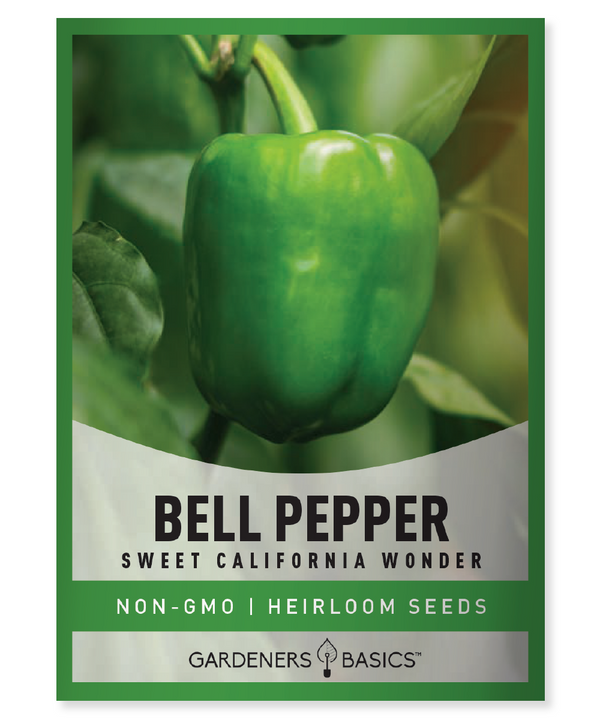
$2.49
Sweet California Wonder Bell Pepper Seeds - Heirloom, Non-GMO, Non-Hybrid, Open-Pollinated Grow your own delicious and vibrant Sweet California Wonder Bell Peppers with our premium heirloom, non-GMO, non-hybrid, open-pollinated seeds! Perfect for home gardeners and pepper enthusiasts, these versatile and… read more
Additional Tips for Maximizing Pepper Plant Growth
The Importance of Proper Watering and Pruning Techniques
Fertilizing peppers is important but is not the only factor contributing to healthy plant growth and fruit production. Two other critical factors are proper watering and pruning techniques.
When it comes to watering your pepper plants, consistency is key. Pepper plants need regular moisture to thrive, but they don't like to be overwatered.
Generally, it's best to water your peppers deeply once or twice a week rather than giving them small amounts of water daily. Pruning is another essential technique for maximizing pepper plant growth.
By removing any suckers or non-productive branches that emerge from the base of the plant, you can help channel nutrients and energy into the main stem and fruit-producing branches. However, be careful not to prune too much or too early in the season, as this can stunt growth and reduce overall yields.
Troubleshooting Common Issues with Pepper Plants
Pepper plants can be finicky sometimes, but with a little attention and care, you can overcome common issues like poor yields or insect infestations. One issue that many pepper growers face is blossom drop—the frustrating phenomenon where flowers fall off before they have a chance to develop into a fruit. This often occurs when temperatures are too hot (above 90°F) or too cold (below 60°F) during flowering periods.
To mitigate this issue, try providing light shade during peak heat hours or using row covers to protect against cold snaps. Another common issue with pepper plants is pest infestations from aphids, spider mites, or other insects.
One natural remedy for these problems is neem oil—a potent organic pesticide that targets many pests without harming beneficial insects like bees and ladybugs. Keep an eye out for any signs of disease like wilt or blight.
These can spread quickly and destroy your entire crop if left unchecked. One way to prevent these diseases is to practice good sanitation in your garden, including removing dead or diseased plant material and disinfecting tools between uses.
Conclusion - How to Fertilize Pepper Plants
Growing peppers can be a rewarding and enjoyable experience, but it also requires a lot of attention and care. By understanding the nutritional needs of your plants, choosing the right fertilizer, and practicing proper watering and pruning techniques, you can help maximize growth and fruit production. However, even with the best intentions, things can still go wrong occasionally.
That's why staying vigilant for common issues like pest infestations or disease outbreaks is important. Taking swift action when problems arise and maintaining good garden hygiene practices can help ensure a bountiful harvest of delicious peppers.
Fertilizing pepper plants are just one piece of the puzzle for growing healthy plants that produce lots of fruit. By taking a holistic approach to pepper growing that includes proper nutrition, watering techniques, pruning methods, and pest management strategies, you'll be well on your way to growing delicious peppers that will make all your hard work worthwhile.
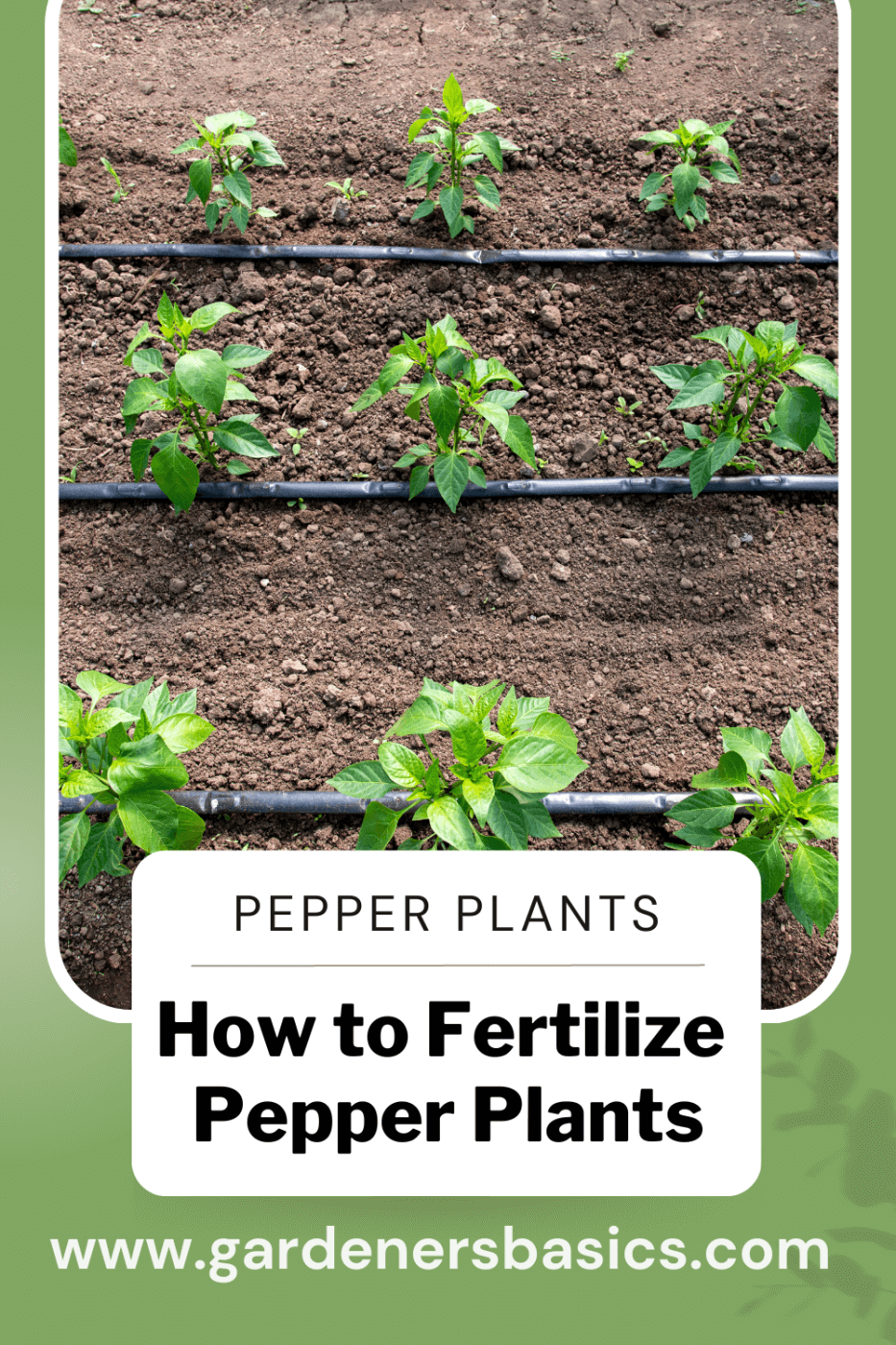 Frequently Asked Questions (FAQ) on How To Fertilize Pepper Plants
Frequently Asked Questions (FAQ) on How To Fertilize Pepper Plants
1. When should I start fertilizing my pepper plants?
Begin fertilizing your pepper plants after they have been transplanted into their final growing location, usually about 2-3 weeks after planting. It's important to wait until the plants have established a strong root system and show signs of healthy growth before fertilizing.
2. What type of fertilizer should I use for my pepper plants?
Pepper plants respond well to a balanced, slow-release granular fertilizer with an N-P-K ratio of 10-10-10 or 14-14-14. Liquid fertilizers with a similar N-P-K ratio can also be used, but make sure to dilute them according to the manufacturer's instructions.
3. How often should I fertilize my pepper plants?
Pepper plants should be fertilized every 4-6 weeks during the growing season. Over-fertilizing can lead to excessive vegetative growth and reduced fruit production, so be sure not to apply too much fertilizer.
4. Should I use organic or synthetic fertilizers for my pepper plants?
Both organic and synthetic fertilizers can be effective for pepper plants as long as they provide the necessary nutrients. Organic fertilizers, such as compost or well-rotted manure, can improve soil health and structure, while synthetic fertilizers offer a more consistent nutrient supply. Choose a fertilizer based on your personal preference and gardening goals.
5. Can I use Epsom salt as a fertilizer for my pepper plants?
Epsom salt can provide a supplemental source of magnesium, which is important for pepper plants' overall health and fruit production. However, it should not be used as a primary fertilizer, as it lacks other essential nutrients. Mix 1-2 tablespoons of Epsom salt per gallon of water and apply it as a foliar spray or soil drench once a month.
6. How can I tell if my pepper plants need more or less fertilizer?
Yellowing leaves, stunted growth, or poor fruit production can be signs of nutrient deficiency. Conversely, dark green leaves and excessive leggy growth can indicate over-fertilization. Adjust your fertilization schedule and amounts based on your plants' appearance and growth patterns.
7. Are there any specific micronutrients that pepper plants need?
In addition to macronutrients (N-P-K), pepper plants require calcium, magnesium, and iron. Many balanced fertilizers include these micronutrients. If you notice signs of deficiency, supplement with additional micronutrient sources, such as dolomitic limestone (for calcium and magnesium) or iron chelate.
8. Is it necessary to test my soil before fertilizing pepper plants?
While not strictly necessary, testing your soil can provide valuable information about its pH, nutrient levels, and organic matter content. This information can help you make more informed decisions about fertilization and soil amendments, potentially improving your pepper plants' health and productivity.
9. Can I use coffee grounds as a fertilizer for my pepper plants?
Used coffee grounds can be an excellent source of organic matter and contain small amounts of nitrogen, potassium, and phosphorus. Spread the used coffee grounds around the base of your pepper plants or mix them into your compost pile to release their nutrients slowly. Remember that coffee grounds alone won't provide all the necessary nutrients, so continue using a balanced fertilizer alongside them.
10. How do I avoid fertilizer burn on my pepper plants?
Fertilizer burn occurs when plants receive excessive amounts of fertilizer, leading to a high concentration of salts in the soil. To avoid this, always follow your chosen fertilizer's recommended application rates and frequencies. Water your plants thoroughly before and after applying fertilizer to help dissolve and distribute the nutrients evenly.
11. How should I fertilize my pepper plants during flowering and fruiting?
As pepper plants transition from vegetative growth to flowering and fruiting, their nutrient requirements shift. Reduce nitrogen levels and increase phosphorus and potassium levels to encourage fruit production. You can achieve this by switching to a fertilizer with a lower nitrogen content or applying additional phosphorus and potassium sources, like bone meal and potash.
12. Is using homemade compost fertilizer for my pepper plants safe?
Yes, homemade compost can be an excellent source of nutrients and organic matter for your pepper plants. Ensure that your compost is well-decomposed and free of weed seeds or pathogens before applying it to your garden. When transplanting your pepper plants, you can use compost as a top dressing, mix it into the soil, or add it to your planting hole.
13. Can I use fish emulsion as a fertilizer for my pepper plants?
Fish emulsion is a natural, organic fertilizer high in nitrogen and micronutrients. Dilute it according to the manufacturer's instructions and apply it as a foliar spray or soil drench every 2-4 weeks during the growing season. Since fish emulsion is primarily a nitrogen source, you may need to supplement with other fertilizers or amendments to provide balanced nutrition.
14. How do I know if my pepper plants get enough water after fertilizing?
Pepper plants require consistent moisture, especially after fertilization. Ensure that the soil is evenly moist but not waterlogged. Check the soil moisture 1-2 inches below the surface – it should feel slightly damp. If the soil is too dry, increase your watering frequency or duration. If it's too wet, reduce the watering amount or allow the soil to dry slightly between waterings.
15. Can I use aged chicken manure as a fertilizer for my pepper plants?
Aged or composted chicken manure can be a valuable organic fertilizer for your pepper plants, providing nitrogen, phosphorus, potassium, and micronutrients. Ensure the chicken manure is well-aged (at least 6 months) to avoid burning your plants and minimize the risk of pathogen contamination. Apply it as a top dressing or mix it into the soil before planting.






